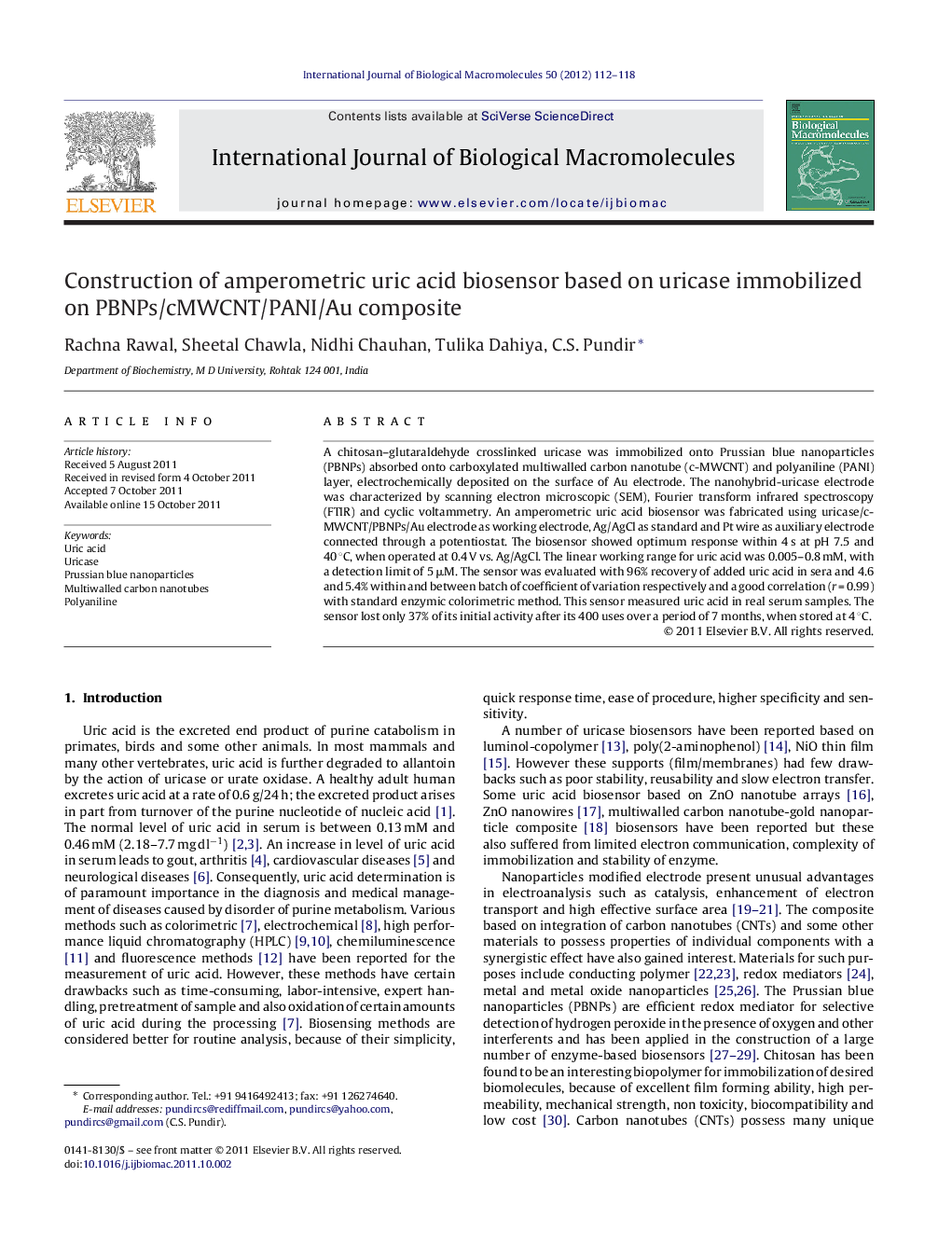| Article ID | Journal | Published Year | Pages | File Type |
|---|---|---|---|---|
| 8335150 | International Journal of Biological Macromolecules | 2012 | 7 Pages |
Abstract
A chitosan-glutaraldehyde crosslinked uricase was immobilized onto Prussian blue nanoparticles (PBNPs) absorbed onto carboxylated multiwalled carbon nanotube (c-MWCNT) and polyaniline (PANI) layer, electrochemically deposited on the surface of Au electrode. The nanohybrid-uricase electrode was characterized by scanning electron microscopic (SEM), Fourier transform infrared spectroscopy (FTIR) and cyclic voltammetry. An amperometric uric acid biosensor was fabricated using uricase/c-MWCNT/PBNPs/Au electrode as working electrode, Ag/AgCl as standard and Pt wire as auxiliary electrode connected through a potentiostat. The biosensor showed optimum response within 4 s at pH 7.5 and 40 °C, when operated at 0.4 V vs. Ag/AgCl. The linear working range for uric acid was 0.005-0.8 mM, with a detection limit of 5 μM. The sensor was evaluated with 96% recovery of added uric acid in sera and 4.6 and 5.4% within and between batch of coefficient of variation respectively and a good correlation (r = 0.99) with standard enzymic colorimetric method. This sensor measured uric acid in real serum samples. The sensor lost only 37% of its initial activity after its 400 uses over a period of 7 months, when stored at 4 °C.
Related Topics
Life Sciences
Biochemistry, Genetics and Molecular Biology
Biochemistry
Authors
Rachna Rawal, Sheetal Chawla, Nidhi Chauhan, Tulika Dahiya, C.S. Pundir,
